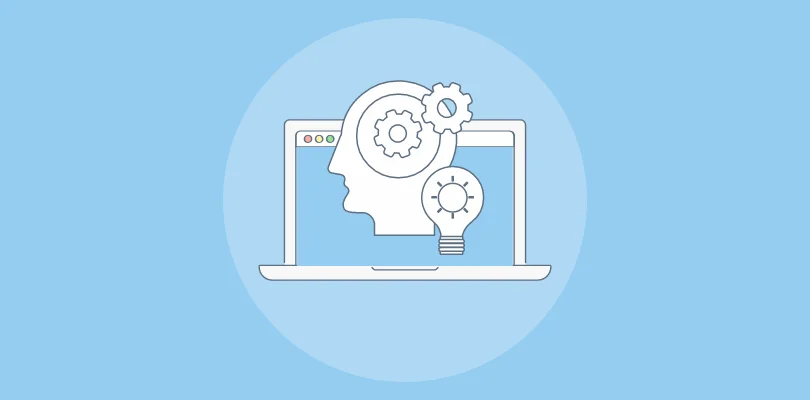
We are in the experience economy where every business is running a race to deliver exceptional customer experiences.
Guess what. While the participants in this competition are countless, the winners are very few.
Why do most businesses struggle to get the customer experience right?
That’s because they are still stuck in the belief that customer experience is just about solving customer problems.
In reality, fixing complaints is just a small part of the customer experience. Memorable experiences stem from a culture of customer-centricity that empowers employees across departments to keep customers at the heart of everything they do.
But fostering such a culture requires more than just wearing the customer’s hat.
You need a solid customer-centric strategy that guides your actions to put customers first in every decision.
This blog unravels 10 strategies to cultivate a culture, values, and mindset that prioritizes customers more than anything else.
Let’s go.
What is a Customer-Centric Strategy?
A customer-centric strategy keeps customers at the front and center of a company’s operations, processes, and decisions. It ensures that customer-centricity goes beyond sales and marketing and touches every aspect of a business, including product development, design, and support.
The aim of a customer-centric strategy is to prioritize the needs and preferences of customers and make them feel valued at every step of their journey. When customers feel valued and cared for, they happily stick to a company, and that’s when you achieve lasting loyalty and an improved bottom line.
What else does a customer-centric strategy help you achieve?
With the support of this strategy, you can build a customer-centric culture where every employee from every department works towards a common goal – customer delight.
But, the question is, why is customer-centricity so important? Let’s find that out in the next section.
Why is Customer Centricity the Need of the Hour?
With customer expectations rising like never before, businesses are in a race to put up their best show to win customers for life.
Despite the efforts, only a few businesses manage to create a pool of loyal customers.
Why is that so?
Because most businesses are sales-driven and product-focused. What they don’t understand is that to achieve customer delight, they need more than just a fancy product or a great service. They need to dive deeper by adopting a customer-centric approach in all areas of their business, from marketing and sales to design and development.
When the entire business works collectively towards a shared vision of customer success, customer delight is guaranteed. This creates a strong foundation for lasting customer relationships, continued business growth, and improved bottom line.
Read more: 10 Steps To Achieve Greater Customer Success
What happens when customers receive poor experiences one after the other and don’t feel valued? They don’t hesitate a little to abandon the company and look for better options.
Now that you know the importance of customer-centricity, let’s look at the challenges it brings along.
Challenges In Achieving True Customer Centricity
In the process of cultivating customer-centricity, there will be multiple challenges you will encounter, some of which are listed below.
1. Lack of Appropriate Tools
On the road to becoming a customer-centric business, you would need the support of self-service, powerful tools for ticketing, and live chat. Lack of such tools can lead to chaotic processes, inefficient teams, and disappointed customers.
2. Siloed Work Environment
For all departments to work towards customer-centricity, they need the right customer data at their fingertips. A siloed work environment with little collaboration affects data sharing to a large extent. This makes it difficult for teams to work together on customer success.
3. Inefficient & Unproductive Customer Support Team
Customer support team productivity takes a hit due to repetitive requests raised by customers. Being so engrossed in handling primary customer concerns, support staff gets little time to focus on serious issues that matter the most.
4. Failure to Meet Changing Customer Expectations
Customer expectations are continuously evolving, so should your business. Sometimes, it gets challenging for businesses to keep pace with the changes both in terms of customer expectations and technology. What you need is a proactive approach and a forward-thinking mindset to meet the rising customer expectations.
These are some of the customer-centric challenges that you may encounter during your journey of becoming a customer-focused business.
10 Actionable Strategies to Become a Customer-Centric Brand
Here are the top 10 customer-centric strategies to turn your business into a brand that knows the key to a customer’s heart.
1. Step Into Your Customer’s Shoes
Knowing your customers inside-out is a tried and tested customer-centric strategy that is sure to bring you great results.
It’s not just about wearing the customer’s hat. It’s about digging deeper and gathering every teeny-weeny detail about your customers.
When you know what your customers like and what they don’t, what interests and disappoints them, what ignites their frustration, and what keeps them coming back, you are better positioned to make all the right decisions.
Moreover, knowing your customers inside out helps you tailor each experience to their expectations.
So, how do you research your customers?
It’s simple. Launching surveys is one of the best ways to get closer to your customers. Before you roll out the surveys, identify the kind of questions you should ask. For example, some of the questions can be around:
- The support channels your customers prefer
- The devices they use to interact with your brand
- The social media platforms they actively use
- The challenges they frequently face with your products
Such questions will help you get into the heads of your customers and make decisions that are in their best interest.
2. Empower Your Customer Support Team
The kind of experiences customers receive depend largely on your support team.
Your support staff is the connecting point between you and your customers. While you are creating long-term strategies, your support agents are the ones actually working on the frontline, battling all customer requests.
In managing the truckload of tickets every day, agents can feel burnt out, which reflects in their interactions. Sometimes, the support process can also get chaotic and confusing, with tickets streaming in from different channels.
In such a scenario, how do you make sure that your support team works with minimum friction and maximum productivity?
A help desk ticketing system turns the otherwise cumbersome support process much easier and streamlined. It provides agents a shared space to keep track of all support tickets, collaborate with each other, and not let any customer issue slip through the cracks.
It automates repetitive tasks and lets agents focus on the tasks that really matter. This keeps the distractions at a distance and allows agents to put their best foot forward in every customer interaction.
3. Encourage Customer Self-Service
Building a customer-centric culture requires you to think from customers’ perspective.
What do customers really want?
One thing that every customer seeks is convenience.
If you are truly customer-centric, you would want customers to get what they need, with minimal effort.
A self-service help center can help you satiate customers’ craving for convenience. In fact, self-service is one of the most preferred channels for customer service, according to research.

Using knowledge base software, you can create a self-service help center that acts as a one-stop platform where customers can instantly find the help they need. This platform should have complete product and service information, FAQs, how-to videos, and guides to help customers solve questions on their own.
Such portals offer round-the-clock assistance and can be accessed across devices. This is a key advantage as customers can solve issues anytime, whether it is 4 in the morning or 10 at night. Customers’ dependence on your support staff reduces, and problem-solving becomes a lot easier.
Let’s also look at the other side of the situation.
A self-service help center is an asset for your agents too. That’s because it reduces the flow of repetitive questions, leaving agents with ample time to work on pressing customer issues.
4. Go Omni-Channel
A successful customer-centric strategy is the one that lets customers reach out to a company with minimum friction.
As more and more customers are using multiple channels to contact companies, it’s crucial to adopt the omnichannel approach.
Customers may find a product online, and the next day, they might visit your store for purchase. They may like a product on Instagram and then head to your website to buy the same.
Since customers work with multiple channels today, a seamlessly connected experience is the need of the hour.

By going omnichannel, you give customers a cohesive experience, regardless of how they contact you and how many channels they switch in the process. This approach uses multiple channels and ensures that they are seamlessly integrated, so that customers gain a consistent experience across all platforms.
Customers can conveniently move from, say, Instagram to a company’s website, or from the website to in-store, with little to no friction.
5. Capture Customer Feedback & Act on It
As a growing business, a question you may constantly be asking yourself is – What is a customer-centric approach?
The answer is simple.
Making customers feel heard and valued is what makes your business customer-centric.
Customers want their voices to be heard and suggestions to be implemented. Lend an ear to what they have to say about your products, services, and your company as a whole. This will bring you more benefits than you expected.
Taking regular feedback and acting on it gives customers the satisfaction that they matter to you as much as you matter to them.
Customers are your biggest critics and fans too. They want the best for themselves, but they want the best for you too. As users of your products and services, they can give you real insights into what you need to improve.
There are multiple ways you can capture customer feedback, the best one being sharing surveys. While creating surveys, make sure they have just the right type and the right number of questions.
You can use a tool like ProProfs Survey Maker to create and share surveys with your customers across the channels they use. It can be social media, a call to action, or even you can add the link to your survey to your email signature. Here’s a short video to help you in the process.
6. Reward Your Loyal Customers
As a customer-centric organization, your priority should be to continue delighting your loyal customers. These customers are your biggest assets as they work together to grow and promote your brand.
Roughly 65% of a company’s business comes from existing customers.
So, how can you keep your loyal customers more delighted and ensure that the loyalty stays forever?
By going above and beyond to reward these customers with personalized thank you notes so that they keep choosing you over your competitors.
You can launch loyalty programs and pamper your loyal customers with amazing discounts, perks, and offers. Make them feel special on certain occasions and let them know that you value the loyalty they have shown towards your business. For example, you can send them customized greetings, special discounts, and goodies on their birthdays.
Such loyalty programs are a great way to foster strong customer relationships that stand the test of time.
7. Appreciate & Reward Your Employees
As a customer-centric company, you cannot afford to ignore your employees, who are at the heart of your business culture.
Your employees are the ones working day and night to win customers. So, just like you reward your loyal customers, it’s crucial to reward your employees too.
Every time employees go the extra mile to serve customers, appreciate their hard work and reward them with some amazing benefits. Let them know that their contributions matter by providing incentives, bonuses, and perks.
Share the success of your high-performing teams openly so that others can feel motivated and follow suit. Also, recognize the efforts of those working behind the curtains to help you achieve customer delight.
Remember that customer-centric culture is the result of the collective contributions of all your employees. So, when you keep your employees happy, they will want to continue working with the same enthusiasm and positivity.
8. Tailor Products & Services to Customers’ Needs
A practical client-centric strategy that is sure to delight your customers is designing your offerings based on customers’ unique needs.
There are thousands of businesses offering the same products you offer. Then what makes you stand out from the crowd?
It’s the little changes you bring to your offerings that tend to win a customer’s heart.
The trick to creating well-tailored products is to involve customers in the product development process. Take their input on what they would like and what they won’t. Ask them about the features that would love to use and the kind of functionality they are looking for.
Take the “Voice of your Customers” seriously and thoughtfully create products that not only fit their needs but meet their expectations too.
Related Read: How to Conduct Voice of Customer Survey
This will help you develop products and services that you know your customers will love to use.
9. Offer Personalized & Memorable Support Experiences
Today’s customers have sky-high expectations of how they should be treated.
Treat them right, and they will pay you off in the form of free referrals and increased business. Treat them wrong, and you will give them the power to harm your business through negative online reviews and word of mouth.
According to a study, dissatisfied customers tend to share their experiences with 15 people.
That’s why you must be super cautious about every interaction you have with your customers.
Provide customers a personalized support experience that is backed by empathy and deep care. Regardless of how customers contact you – via phone, chat, or self-service, the support experience they receive should be memorable so that they leave with a smile on their faces and positivity in their hearts.
As a customer-centric business strategy, personalization allows you to send targeted messages to customers, refer relevant products, and, most importantly, develop a deep bond that stays for life.
10. Train Your Employees on Customer-Centric Skills
Another customer-centric strategy that can help you build the right culture and values is inculcating the customer service skills such as empathy, patience, and self-control, in your support team.
As your support staff is always on the frontline, dealing with different customers, they should have the required skills to lead every conversation to a positive outcome.
In addition to technical knowledge, your support staff must know how to empathize with customers, listen patiently and communicate clearly. They should be able to drive conversations in the right direction and ensure that customers leave with a smile.
Every day your support team will get to interact with customers of different personalities. While some customers are easy to handle, some can give your agents a really hard time. There will also be customers who will not hesitate to vent their frustration on social media.
A good rule of thumb for agents is to keep calm in such situations and think sensibly. Losing control of emotions in such situations can put your company’s reputation at risk.
So, train your agents on the right skills and let them put their best show in every customer interaction.
How to Measure the Effectiveness of Your Customer-Centric Strategies
Ask anyone about how to measure customer centricity and you are likely to receive confusing and dissatisfactory answers.
Is customer-centricity really measurable?
Yes, it is, and we are going to tell you how.
Here are the top three metrics that matter the most when it comes to measuring customer-centricity.
✅ Net Promoter Score
NPS gives you a clear picture of your brand promoters, passives, and detractors. It focuses on measuring customer loyalty through a single question – “How likely are you to recommend our company to your friends/family/colleagues? with 0 to 10 as the answer options.
So, when you get a score of 9 or 10, you are doing a great job. A score of 7 to 8 means customers are satisfied with your company but may look for better options. Getting a score between 0 to 6 means you are still far far away from achieving your customer-centricity goals.
Related Read: How to Calculate Net Promoter Score (NPS)
✅ Customer Churn
Another important metric to measure customer centricity is customer churn. This number introduces you to the harsh reality of how many customers you are actually losing. It shows you the percentage of customers who stopped using your products or services in a particular time period.
Your aim should always be to keep the customer churn rate as low as possible.
Read More: 12 Effective Strategies to Reduce Customer Churn
✅ Customer Lifetime Value
As a customer-centric business, your aim should be to foster lasting customer relationships. When customers stick to your business, they contribute to your bottom line. Customer Lifetime Value shows you the amount of revenue a customer brings during their association with your company.
This value helps you understand the value existing customers are adding to your business. Keeping CLV as the basis, you can devise strategies to improve customer acquisition and retention.
Put Your Customers in the Driver’s Seat
The competition in today’s business landscape is intense. Every company is trying to outperform and set new bars for success.
Surviving and succeeding in a competitive market requires more than just a fancy product or a great service. You need to dig deeper and compete on what really matters – customer experience.
There may be companies with bigger teams and higher budgets that will try to pull you down. You can still thrive on the customer-centric culture and human values that make customers come back to you again and again.
Create a customer-centric strategy that makes your business more customer-focused and less sales-driven, and you will be surprised with the results. To foster a customer-centric culture, get into your customers’ heads and understand what they really need. Tailor products and services to their interests, offer personalized experiences and give them the convenience of self-service.
With the support of such solid strategies, your business is bound to succeed.
Do you want a free Knowledge Base?
We have the #1 Online Knowledge Base Software for instant self-help








